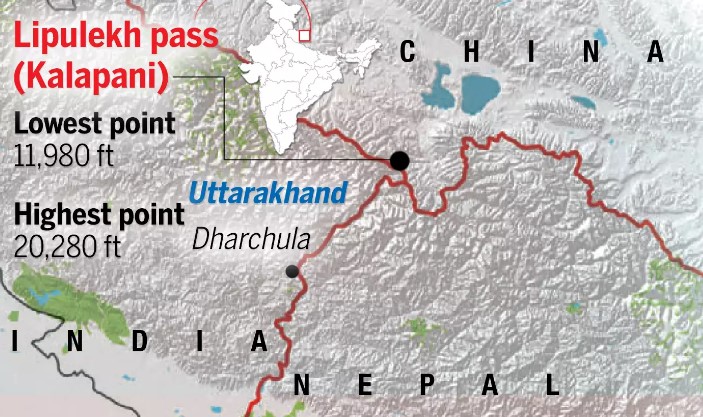Focus: GS-III Internal Security Challenges
Introduction
In the context of ongoing tensions and territory issues with China and Nepal, the Uttarakhand government, along with the defence forces, has taken measures to strengthen infrastructure along its international border.
Why Uttarakhand matters?
- Uttarakhand shares a 350-km border with China and a 275-km boundary with Nepal. Five of the state’s 13 districts are border districts.
- Pithoragarh is strategically very sensitive as it has boundaries with both China and Nepal.

Radar and tactical airfields
- In the recent development, the Uttarakhand government has agreed to provide land to the Indian Air Force (IAF) to set up air defence radars in three districts bordering China – Chamoli, Pithoragarh, and Uttarkashi.
- The IAF has also proposed to develop a new Advanced Landing Ground to facilitate its activities in the hill areas.
Filling gaps in telecom infra
- The Uttarakhand cabinet has approved an amendment in the state’s information technology (IT) policy to provide incentives to facilitate private telecom companies to install towers in “dark villages” in which telecommunication facilities are unavailable at present.
- More than 400 “dark villages” have been identified in Uttarakhand, where no telecom service provider (TSP) or Internet service provider (ISP) extends services. These villages are mostly located along the state’s border of China and Nepal, government sources said.
- Also, villagers in border areas have traditionally acted as the eyes and ears of the defence forces, and telecommunications are a force multiplier in this regard.
-Source: Indian Express



